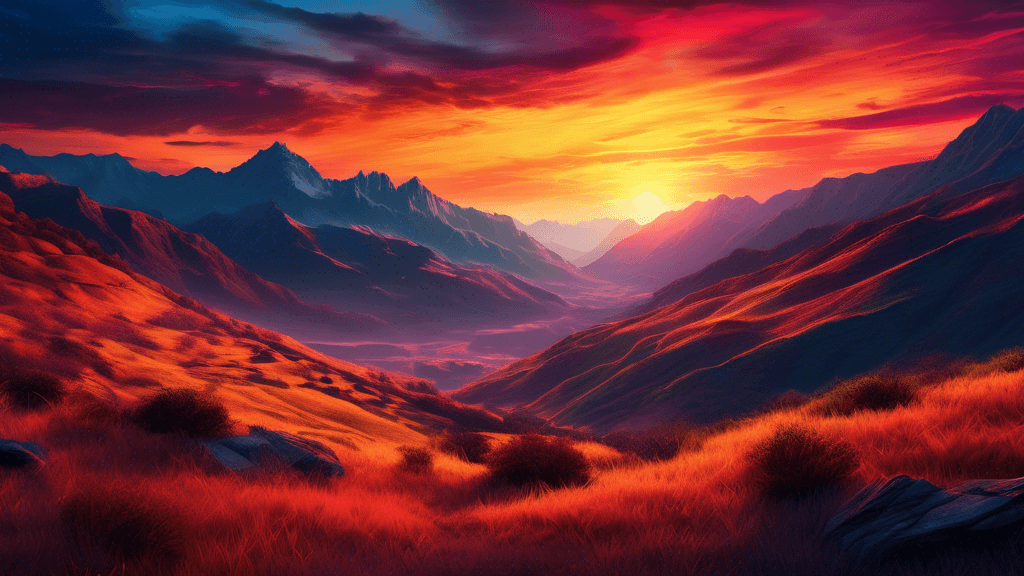
Mastering Landscape Photography: Techniques for Achieving Sharp and Impactful Images
Share
Understanding the Art of Landscape Photography
Landscape photography is more than just capturing beautiful scenery. It's about conveying emotions, capturing the essence of a place, and telling a story through natural elements. Aspiring and professional photographers alike strive to perfect their skills in this captivating genre. This blog aims to assist photographers in mastering landscape photography by enhancing image sharpness and achieving impactful results.
Why Focus on Sharpness in Landscape Photography?
Sharpness in landscape photography is crucial for capturing the fine details that give a landscape its character—be it the texture of rock formations, the delicate patterns of leaves, or the smooth surface of water. Achieving optimal sharpness enhances the overall impact of the image, making it more engaging and realistic. But what techniques can photographers employ to ensure their landscapes are sharp and striking?
Optimizing Camera Settings for Maximum Sharpness
Understanding and adjusting camera settings is fundamental in achieving sharp landscape images:
- Aperture: The aperture setting has a significant effect on depth of field. Shooting with an aperture of f/8 to f/16 generally provides a good balance of depth and sharpness.
- ISO: Keeping ISO levels low (such as ISO 100 or 200) will minimize noise in the images, which can detract from sharpness.
- Shutter Speed: Use a tripod and a remote shutter release to allow for longer shutter speeds without camera shake, preserving sharpness across the image.
Leveraging the Power of Focus
Proper focusing is paramount in landscape photography. Here are some techniques to enhance your focusing accuracy:
- Hyper focal Distance: Mastering this concept can dramatically increase the sharpness of your photos. By focusing on the hyper focal distance, everything from half this distance to infinity will be reasonably sharp.
- Focus Stacking: This technique involves taking multiple photos with different focus points and combining them in post-processing to create an image with greater depth of field.
Incorporating Accessories to Boost Image Quality
Simple tools can greatly enhance the quality and sharpness of landscape photographs:
- Use a Tripod: A sturdy tripod stabilizes your camera, especially under windy conditions or during long exposures, ensuring sharper images.
- Filters: Polarizing filters can enhance the colors and reduce reflections, while neutral density filters allow for longer exposures without overexposure.
Composing to Convey Depth and Interest
Composition plays a crucial role in the effectiveness of a landscape photograph. Here are key elements to consider:
- Leading Lines: Use natural lines, such as rivers or paths, to lead the eye into the photograph.
- Rule of Thirds: Position key elements of the landscape at the intersection of dividing lines to create more tension, energy, and interest in the composition.
- Symmetry and Patterns: Symmetrical patterns can help draw the viewer’s eye into the heart of the image.
Post-processing Strategies for Enhanced Detail
Post-processing is an essential step in achieving the final look of your landscape images. Techniques like sharpening, contrast adjustments, and color corrections can dramatically improve the quality of your photos. Be mindful not to over-process, as this can lead to unnatural-looking images.
Conclusion and Call to Action
The journey to mastering landscape photography is both challenging and incredibly rewarding. With these techniques for improving sharpness and impact, photographers can produce more compelling and powerful images. Remember, the key to growth in photography is continuous learning and practice.
Now, why not grab your camera, head out into the great outdoors, and put these techniques into practice? Observe the difference refined skills can make in your landscape photography.





